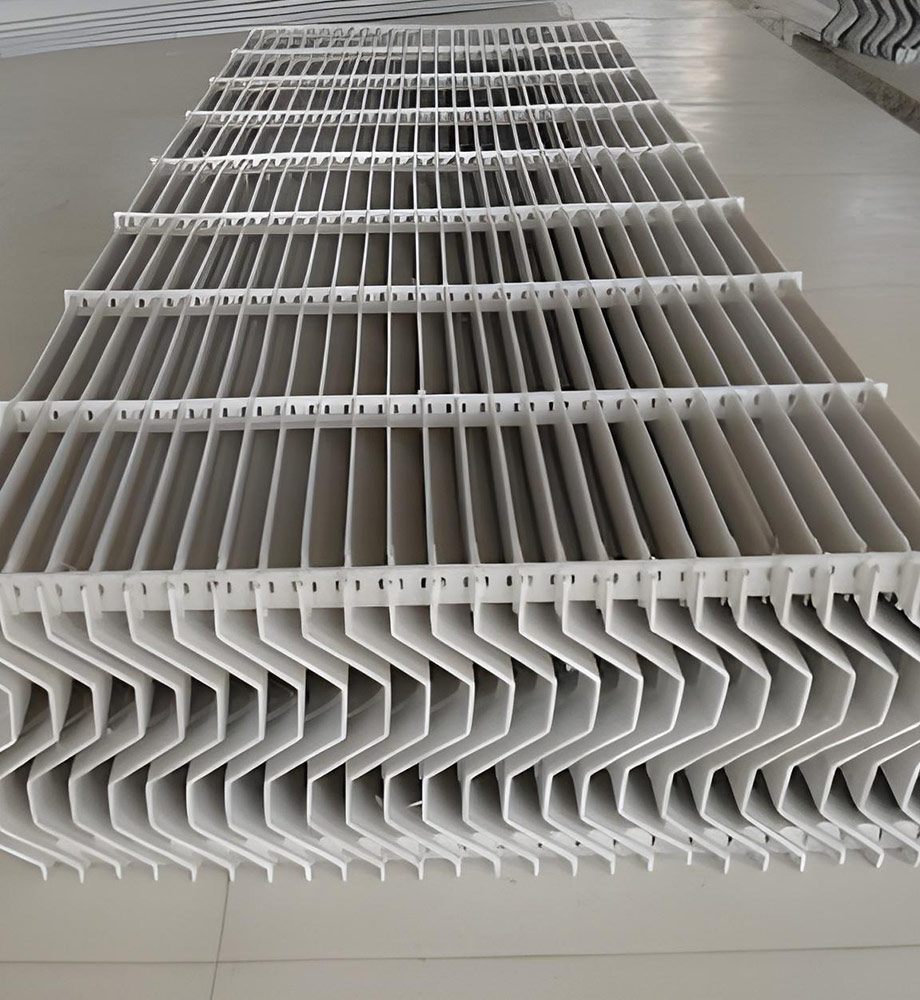Key Features
- FRP Frames: The sheet or frame holding the mesh is FRP, so it does not rust in acidic condensate.
- High Efficiency Media: Can incorporate knitted mesh or structured vane packs for >98% droplet removal.
- Low Velocity Design: Eliminators are sized to allow gas to spread out, minimizing pressure drop while capturing moisture.
- Maintenance Access: FRP hatches or panels allow easy inspection and cleaning of the media pads.
Benefits
- Protect Downstream Equipment: By catching acid mists, particles and droplets, they prevent damage to fans, stacks and the environment.
- Prevent Pollution: Ensures compliant emissions – only dry, clean gas leaves the scrubber.
- FRP Longevity: Will not deteriorate from the very liquids they capture, unlike metal demisters which require frequent replacement.
- Low Operating Cost: Minimal moving parts and the self-draining mesh means nearly no operational maintenance.
Applications
Found in any wet-scrubbing system needing carryover control: wet ESPs, packed towers, venturi scrubbers, acid spray towers, deodorization units. Common industries are chemical manufacturing (acid mist), pulp & paper, metallurgy (oxide aerosols), and oil & gas (amine system vents). FRP mist eliminators are often factory-installed in FRP scrubbers or retrofitted into stacks.
Technical Specifications
Mist eliminator performance is given by collection efficiency vs. droplet size. Typical designs remove droplets down to 1–5 microns. FRP eliminators are rated for the same operating conditions as the scrubber (e.g. up to 1 psig and 100–200°C for certain resins). They are usually specified per standard such as ANSI/ASME (e.g. Vane pack shapes following Chevron designs).
Unique Selling Points
The key USP is durability in harsh service. For example, an FRP mist eliminator in a sulfuric-acid scrubber will outlast any fiberglass or steel pad in 20% sulfuric solution. The FRP casing also allows for easier pad replacement (the frame stays intact). FRP mist eliminators can be custom-shaped to fit odd scrubber geometries, and they contribute almost zero pressure drop to the system. In summary, FRP demisters provide effective droplet removal with extremely low downtime, a critical advantage in continuous pollution-control processes.

